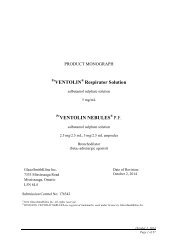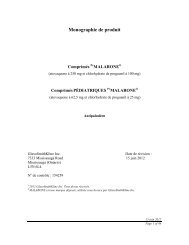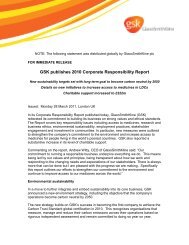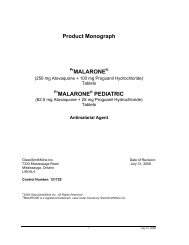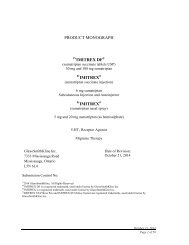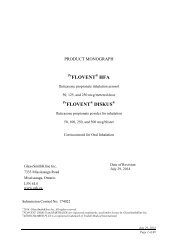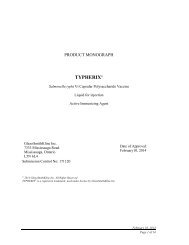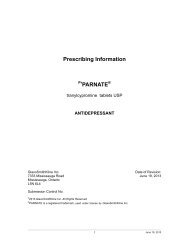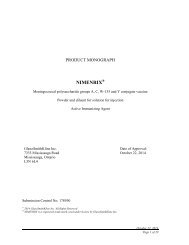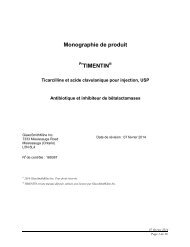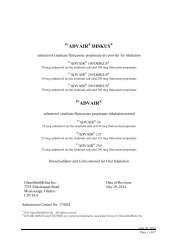Product Monograph ZANTAC - GlaxoSmithKline
Product Monograph ZANTAC - GlaxoSmithKline
Product Monograph ZANTAC - GlaxoSmithKline
- No tags were found...
Create successful ePaper yourself
Turn your PDF publications into a flip-book with our unique Google optimized e-Paper software.
alveolar macrophages in the lungs. The accumulations of these cells is a naturalphenomena in aging rats and chronic administration of a wide variety of drugs hasbeen known to contribute to this process. Therefore, it is unlikely that thepharmacologic concentrations of ranitidine administered to these rats contributed tothis natural process.In the six-week and six-month oral studies in the dog (100 mg/kg/day) loose feceswere occasionally detected, while in the six-month study loose stools wereaccompanied on eight occasions by mucus-like material and sometimes by blood,mostly from one dog. Loose feces, salivation and vomiting were observed in the 54-week dog study.In isolated cases, dogs passed red-stained feces which occasionally tested positivefor occult blood. When the dose level was increased from 100 mg/kg/day to 225 –450 mg/kg/day, no further red-stained feces were seen, suggesting that anyrelationship to ranitidine is unlikely. Post-mortem examination of the dogs revealedno ranitidine-induced changes in the alimentary tract.One dog had marginally raised levels of plasma alanine aminotransferase andalkaline phosphatase during the six-week study. This same dog also showed somenecrotic foci in the liver. Small lesions of focal necrosis and fibrosis were also seenin one piece of liver from one female dog treated with 100 mg/kg for six months. Noother differences were detected by light and electron microscopic examination of thetreated and control livers. Since the focal lesions were seen in only one dog andwere restricted to one piece of liver, it suggests that they were not caused byranitidine.Muscular tremors, an inability to stand, and rapid respiration were seen on occasionin dogs treated with 225 mg/kg/day in the 54-week study. The prevalence of theseobservations was increased when the dose was increased to a toxic level of450 mg/kg/day. One dog died: no specific pathological changes or reason for thedeath was discovered.February 18, 2014Page 27 of 41



